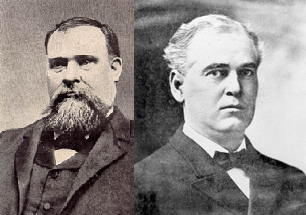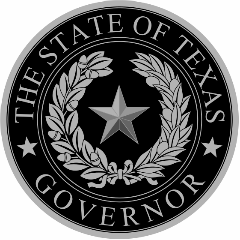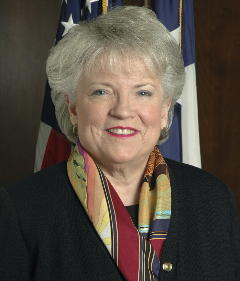With the filing having concluded, we figured the good lot of you, like us, would find it interesting to know what steps our Governors took to become Governor. We looked at their political paths to see what road has been the most traveled to U-Haul it into the Governor’s Mansion.
In
looking at the resumes under “Offices Held” for each governor before
they won that seat, there was not one particular secret short-cut up the
mountain to reach the summit, but there are some commonalities and
patterns worth noting. (Of course, this doesn’t take into consideration other ginormous factors such as personal wealth and party affiliation.)
Most striking was the average number of elected positions held prior to their elections as governors. If
you are advising your young protégé who you believe can become governor
someday that they should run for a small local office first, then aim a
little higher for Congress or the State Senate, then make a couple of
pit-stops along the state-wide ballot, that path appears to be uncut—at
least all the way to The Mansion. Take
Carole-of-Many-Names, for instance, who served as President of the
school board, Mayor of Austin, Railroad Commissioner and Comptroller—a
successful career by all accounts, but not the trek to Governor.
Over
Texas’s 166-year history, Texas Governors have held an average of only
two elected posts (and we threw in Cabinet posts for good measure)
before becoming Governor. With the advent of mass communications, that number has dwindled to 1.5 since John Connally. In fact, five governors never held a prior office. Too much time in the public eye may not be so helpful. Maybe a balance is needed. Voters and donors need to know your name, but you can out-stay your welcome with a slow ascent up the trail.
Which begs the question, which posts have these folks held? Predictably, Lt. Governor takes the cake with 11 governors moving from the number 2 slot on the ballot to number 1. Lite
Gov is not so light with all that power to make and break laws, and
when you run for office, you can practically say you have been Deputy
Director of Vice Chair of the state—you’re ready.
In terms of the other non-lite-gov-offices that were the stepping stones right before the top we have a tie for second place: five men were Attorneys General and, to our surprise, five were state senators when they stepped up to the governor’s chair. After
that, a couple held Cabinet posts, three were US Senators, a couple
were members of Congress and a couple were Railroad Commissioners. Only one Mayor has ever been governor, John Ireland in 1883, and he served as a judge and in the State Legislature first. You are much more likely to be a governor if you have been a District Attorney—10 governors made that pit-stop along the way.
In terms of professional backgrounds, 24 have been attorneys, 21 veterans and six ranchers, including Perry. After that, it’s a smattering.
Predictably, most (twenty-six to be exact) held a statewide office before they became Governor. But several statewide posts have never been a direct stepping stone to Governor: Agriculture Commissioner, Land Commissioner and Comptroller. While
two have stepped up directly from Railroad Commissioner, it should be
noted that the last was Beauford Jester in 1947 during the days that the
Commission ultimately controlled worldwide oil production in the way
OPEC does today.
In fact, nobody has ever held
the positions of Land Commissioner nor Comptroller and been elected
governor. The Railroad Commissioner position is a tricky one. Rick Perry is the only one who has been Agriculture Commissioner and, of course, he served as Lite Gov first.
But Good Hair may not be the last. There is something to be said about cutting a new path for others to follow. When you look at the governors’ histories, it’s interesting to note a possible pattern that we are coining as “consecutivity.” (Unlike Palin and Bush, we know we’re making this one up.)
 While the paths do differ, there have been some whose paths have been identical or near-identical. There is the oh-so-popular Lt. Governor/Texas Senate path that four governors traversed. An equally popular and less predictable path that four more governors traveled is the Attorney General/District Attorney avenue. The
fact that Jim Hogg and Charles Culberson both served in these positions
before winning their races for governor is interesting. The fact they did it back-to-back as Governors #20 and #21 is even more interesting.
While the paths do differ, there have been some whose paths have been identical or near-identical. There is the oh-so-popular Lt. Governor/Texas Senate path that four governors traversed. An equally popular and less predictable path that four more governors traveled is the Attorney General/District Attorney avenue. The
fact that Jim Hogg and Charles Culberson both served in these positions
before winning their races for governor is interesting. The fact they did it back-to-back as Governors #20 and #21 is even more interesting.
As new pathways are cut, “the group” may see only what is directly in front of them and decide this is the new path. With Big Hair in office right now, many may have decided that the path to the Mansion has several stops: a local office, the Legislature or Congress, then to a down-ballot office, to a higher statewide office then to Governor. An examination of history suggests, however, that this could be a tricky path.
What does not seem to matter is a lot of experience or “paying your dues.” If you’ve got what it takes, you’ve got what it takes. Of
course, that could be a lot of things, such as money, charisma, luck, a
little glamour, connections—but that’s a whole other recipe for us to
cook up.
As for the two likely nominees:
Wendy Davis
Professional background: Attorney
Political background: Fort Worth City Council, State Senate
Greg Abbott
Professional background: Attorney
Political background: State District Judge, State Supreme Court Justice, Attorney General



No comments:
Post a Comment